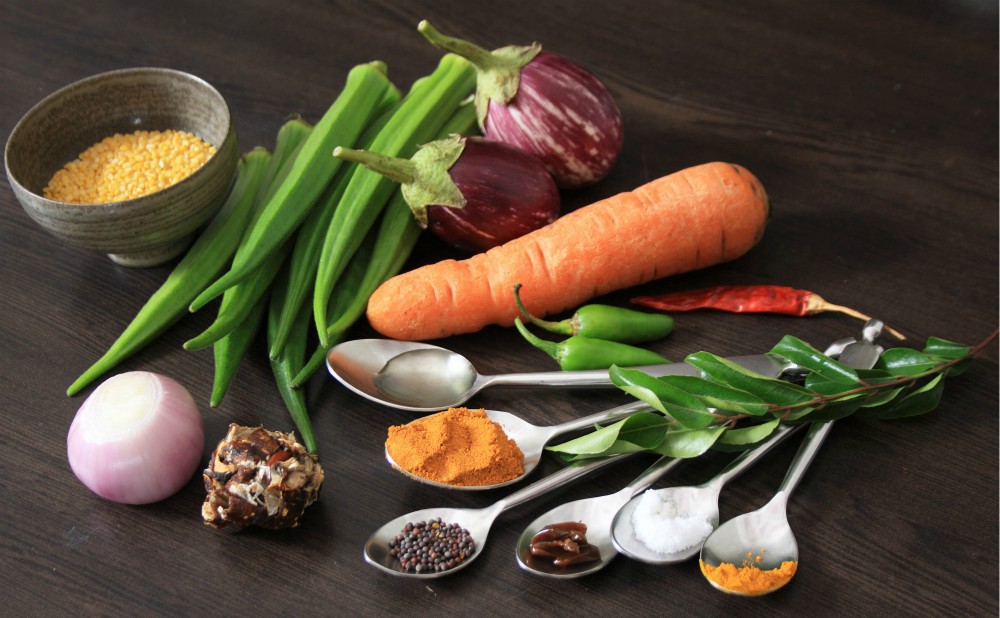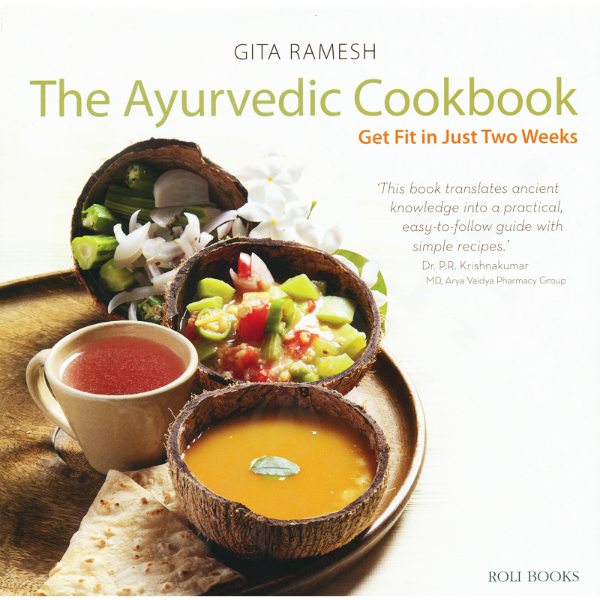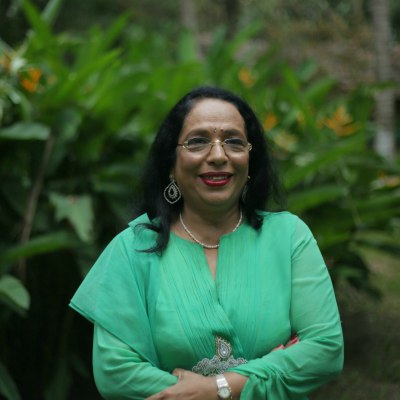We use cookies to optimise our website functionality and give you the best experience possible. Please, accept our Terms and Conditions. ACCEPT
Sambhar is one of the most popular and healthiest south Indian dishes. There are many ways how to prepare it, but Mrs. Gita Ramesh, in her Ayurvedic cookbook, believes, that it taste the best, if it is cooked with love!
Sambhar is a south Indian vegetarian stew, made of pulses and vegetables. 'The Historical Dictionary of Indian Food' by late food historian KT Achaya described Sambhar as, "a fairly thick spicy extract of thuvar dhal soured with tamarind, frequently containing soft vegetables like brinjal, drumstick, gourd and lady's finger." But, preparation is much more than an assortment of delicious flavours. A bowlful of this savoury stew packs a number of health benefits, every sambar lover must know! But less known is the legend behing the dish origine.

INGREDIENTS
The story behind the dish as we know it today as Sambar, is that it was created in the kitchens of the Thanjavur Maratha King, Shahuji in the 17th Century. King Shahuji had a special guest of honour at his court, and had wanted to prepare a feast. Marathas famous for being vegetarian, had planned on serving the traditional Maratha dish Amti. However, the royal cooks had ran out of Moong bean lentils and Kokum; which were the traditional ingredients needed to cook Amti. So they experimented with Toor lentil and Tamarind pulp instead of Kokum; and also added ground Coconut and vegetables. Guess who was the guest of honour? It was the Maratha King Sambhaji, the son of Shivaji. Hence the newly created dish was named Sambhar in the honour of the guest of the court, and the Maratha King.
METHOD OF COOKING
It can be argued that the dish was part of the Tamil cuisine for a long time and the etymology of the word Sambhar comes from the Tamil word Chaampu which means, ground paste or fine paste. So any curry made from a paste of ground spices and concoctions is technically Sambhar or Kulambu (literally Emulsion). There are evidences which point to inscriptions from the early 15th century and all the Sambal dishes carry the same etymology.
"Anybody with absolutely no cooking skills can also follow these simple and quick recipes and eat fresh and hot food. We selected each dish by keeping in mind today’s trend of eating habits and taste. " Gita Ramesh

THE AYURVEDIC COOKBOOK
Get Fit in Just Two Weeks
by GITA RAMESH
In the Ayurvedic Cookbook, Mrs. Gita Ramesh describes the deep knowledge of ayurvedic healing science in the form of ayurvedic recipes. These Ayurvedic food recipes help to maintain a perfect balance and harmony within the human body. This ayurvedic cookbook describes self-healing methods with respective to balancing the Vata, Pitta and Kapha doshas using the herbs, spices, and vegetables. It is an Ayurvedic approach to food with scrumptious vegetarian cooking for a healthy life.

She is heart and soul behind the Kairali Group since its inception. Her status as a pioneer in the health and travel industry is reflected in award "Best Woman Entrepreneur for Promoting Wellness, 2010".

Launched the first ayurvedic centre in New Delhi in 1989 followed by The Ayurvedic Healing Village at Palakkad, Kerala in 1999. Today the company under its umbrella has over thirty centres in India and abroad.